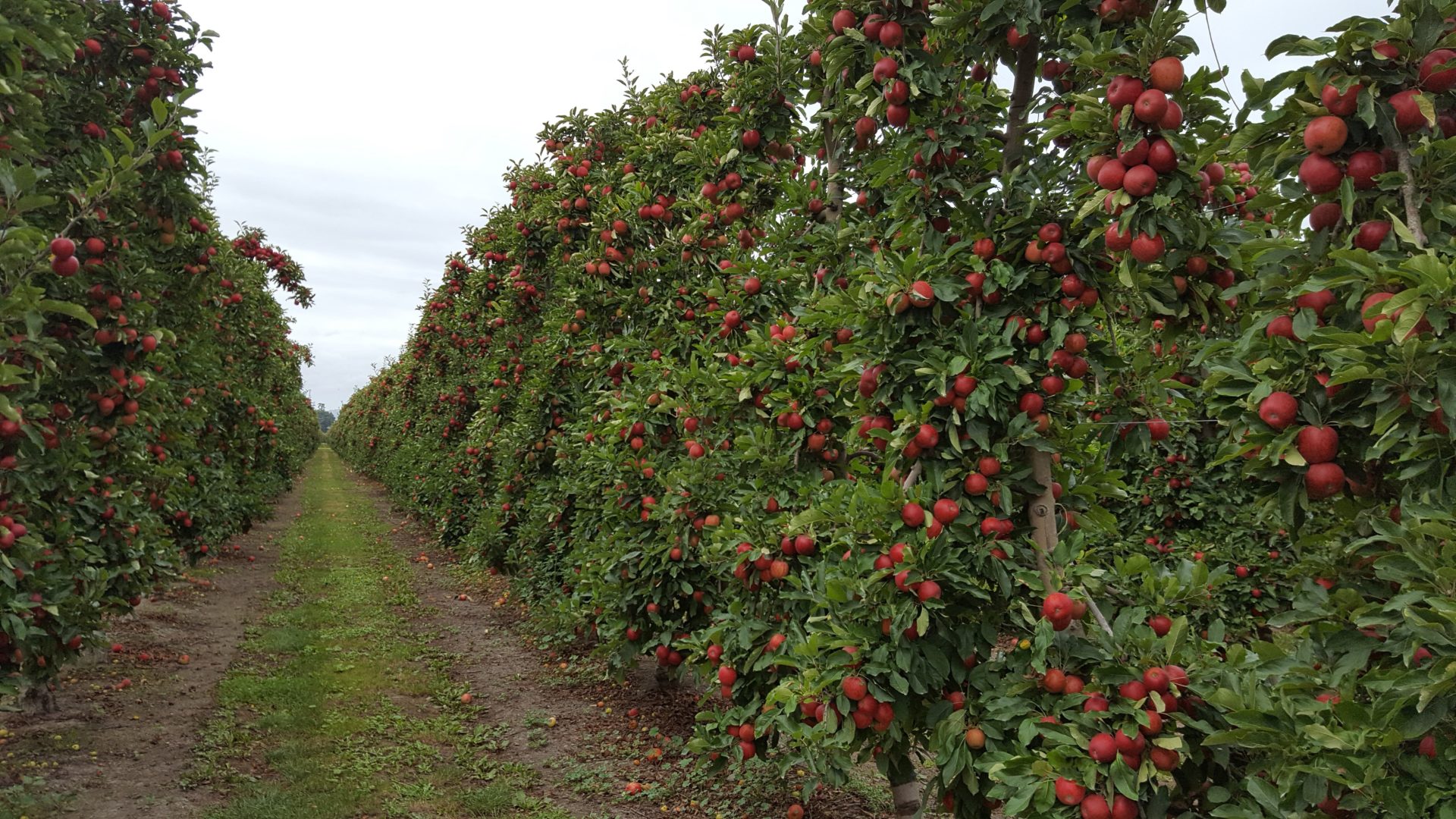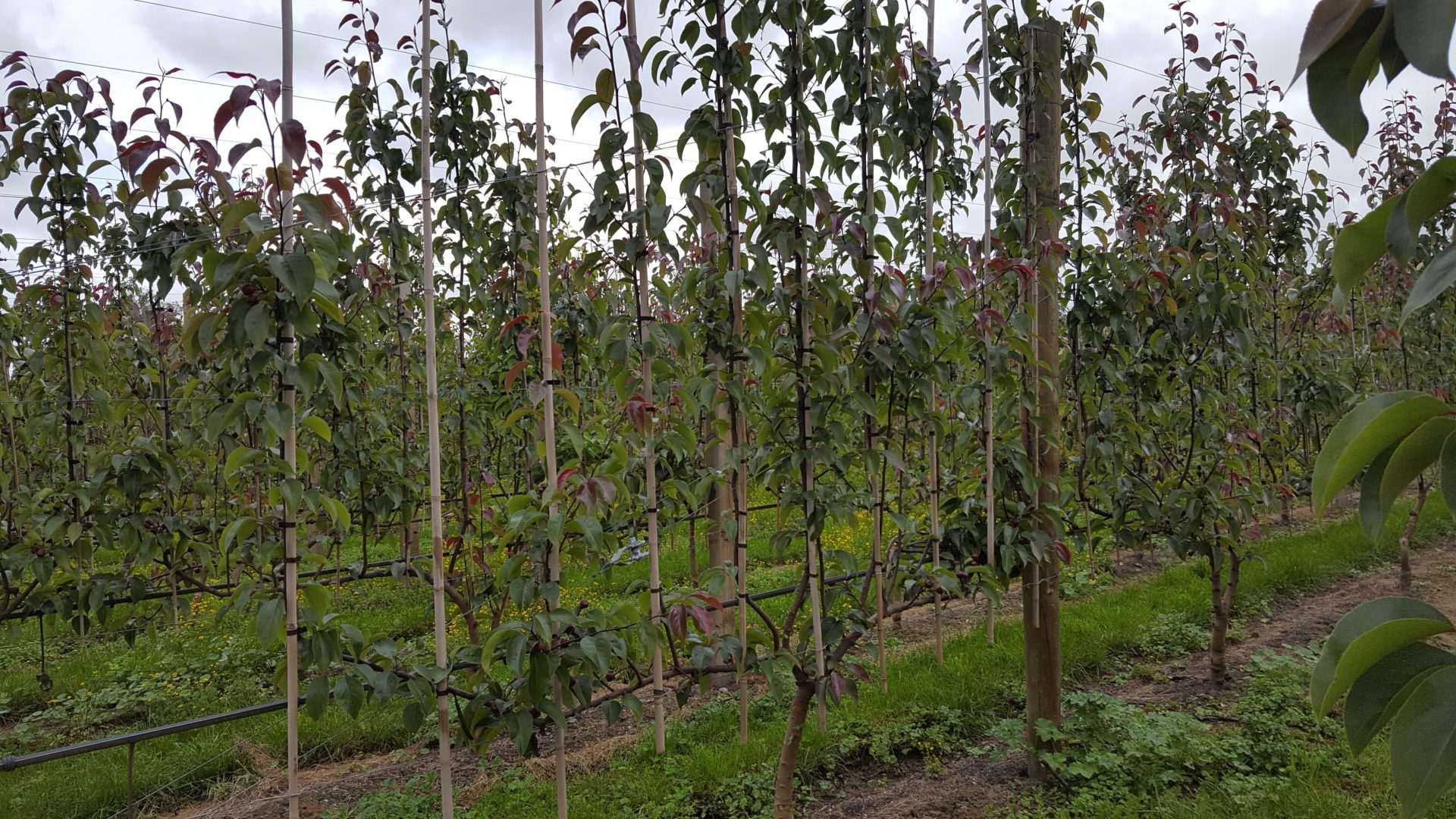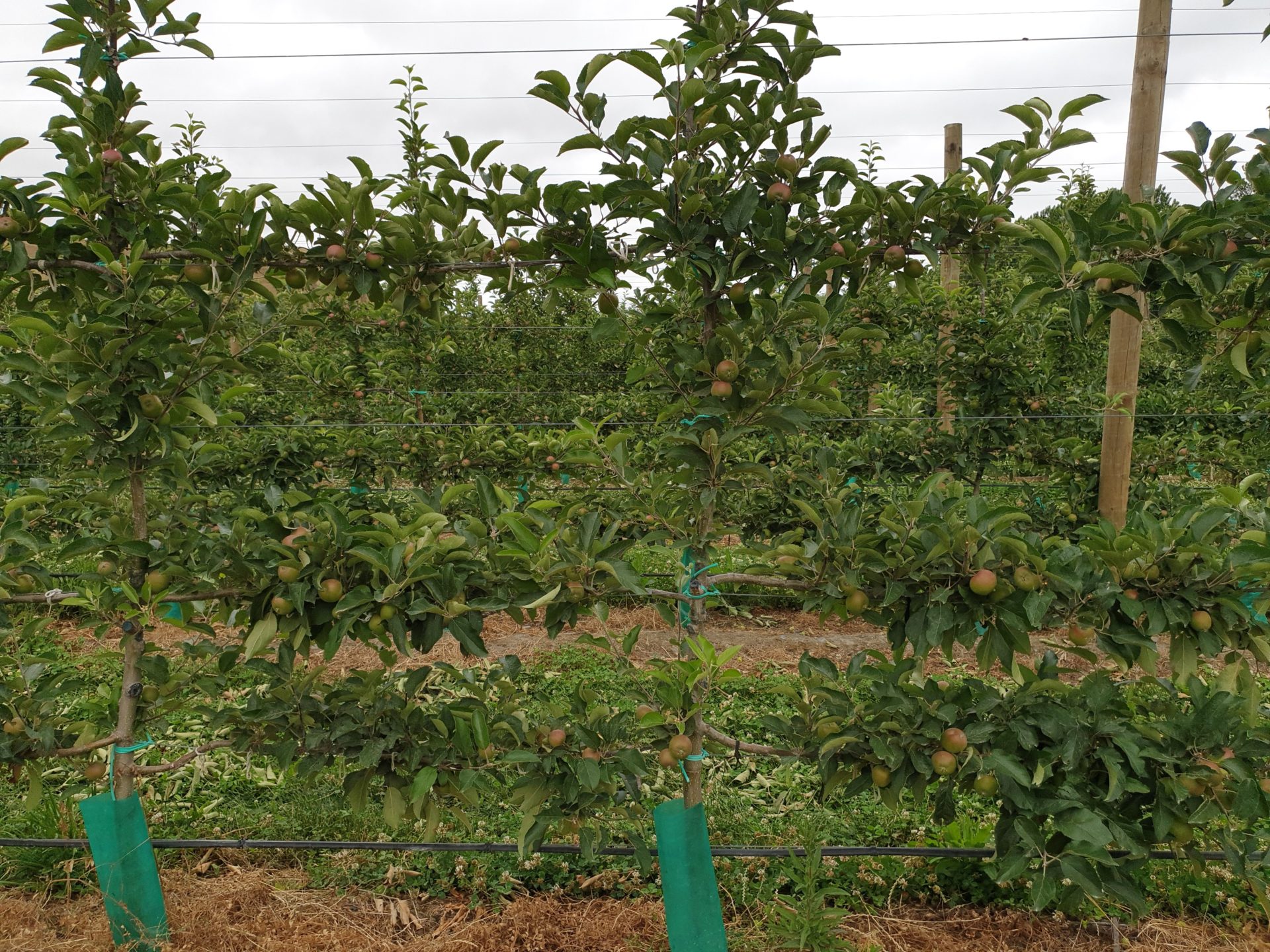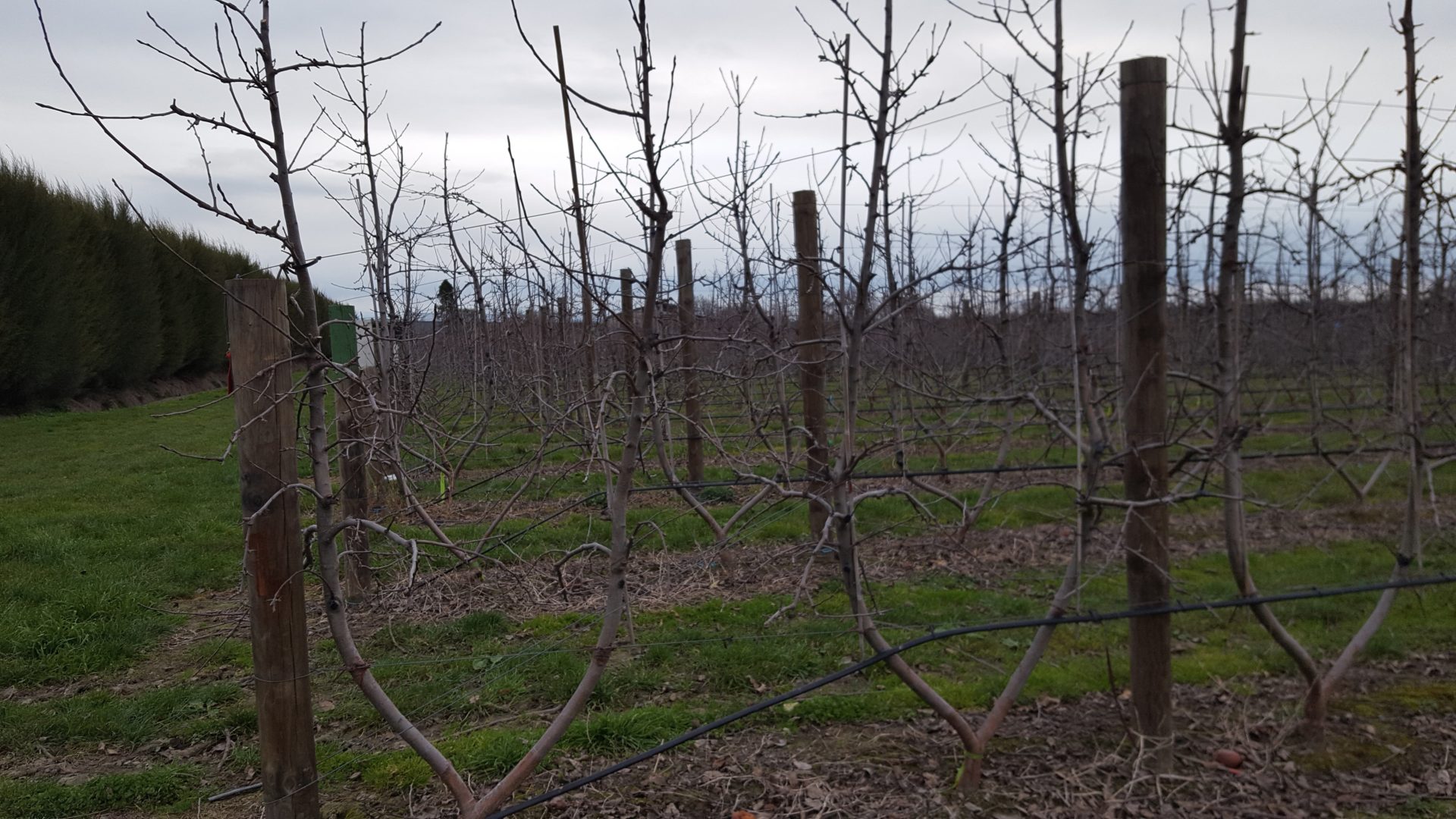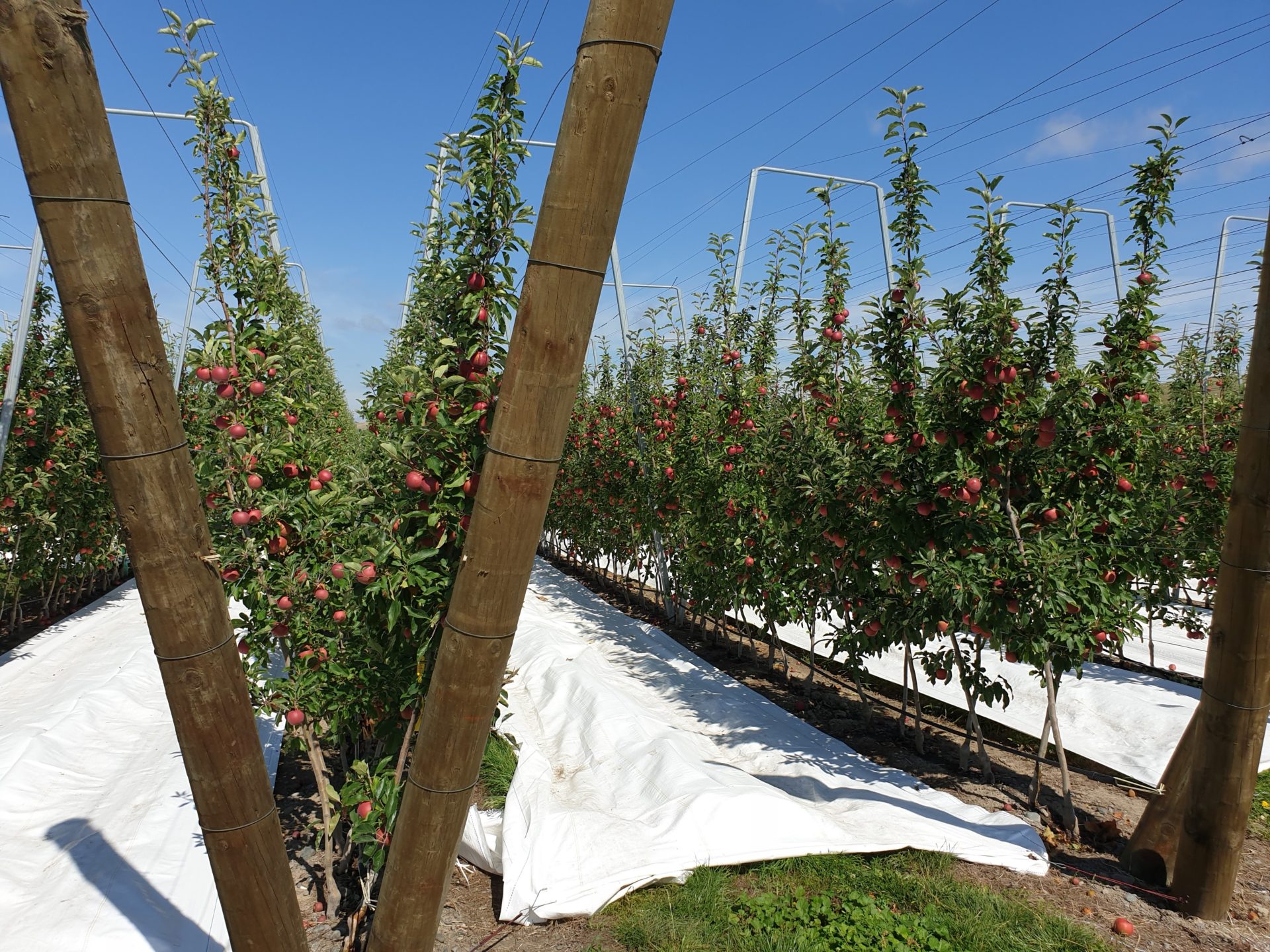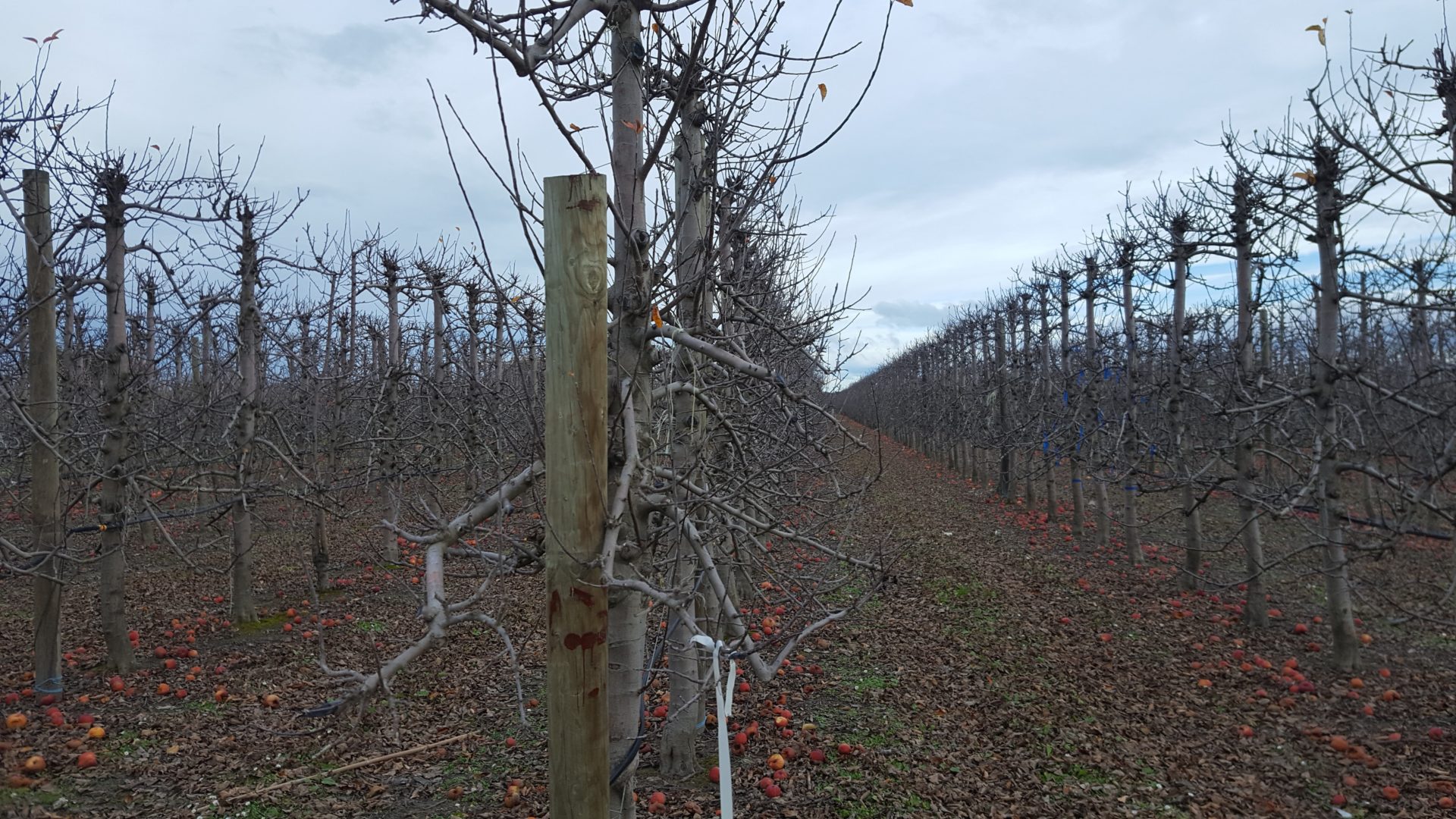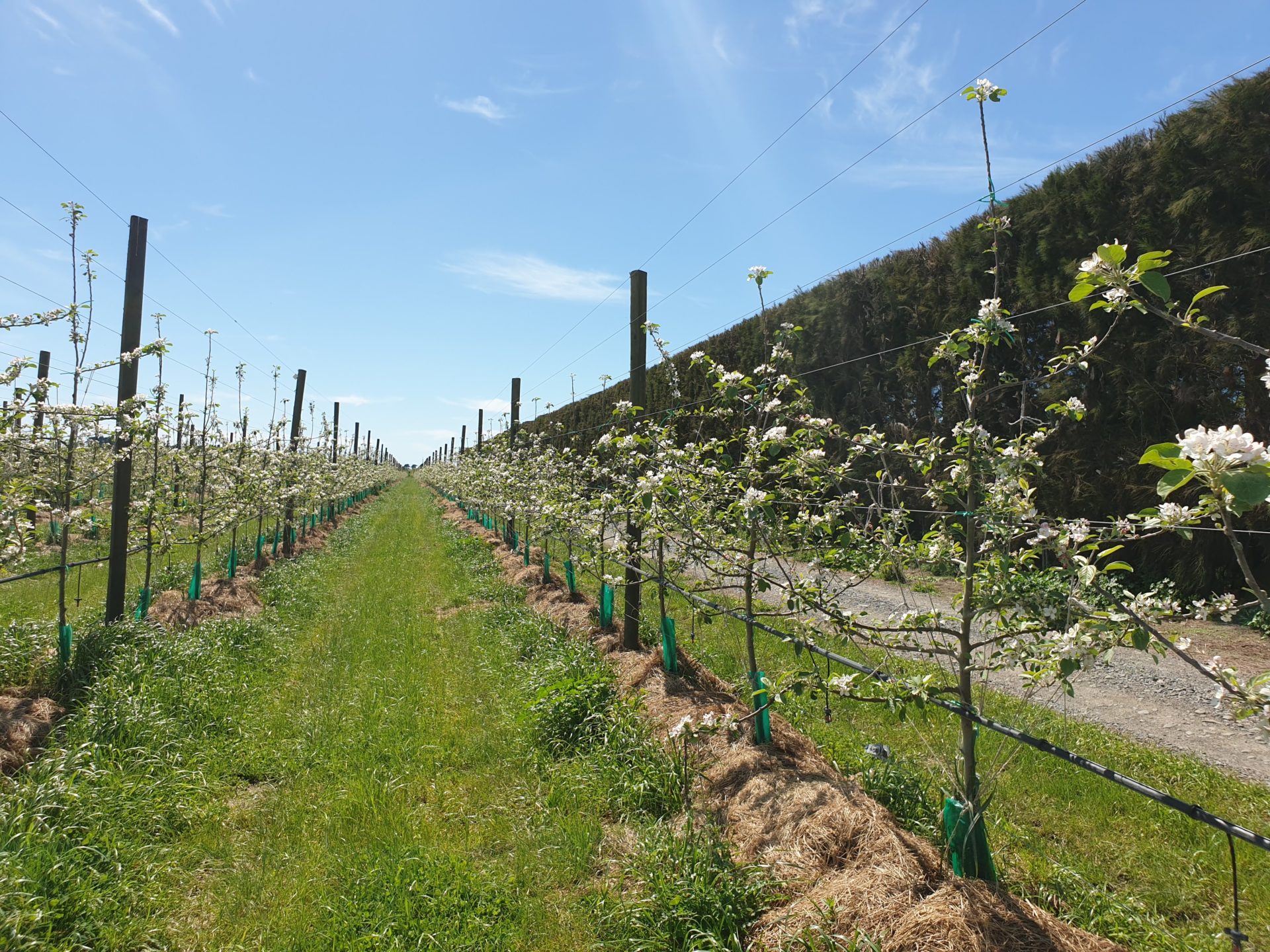Apple growing systems – running hot
As first seen in the Orchardist, March 2020
Jack Hughes, Horticultural Consultant, Fruition , Hawke’s Bay
The NZ apple industry is currently enjoying an exciting time of innovation and exploration in the development of growing systems. Let’s chat about what’s happening starting with setting the scene.
Back in the day
NZ was slow to come to the global high-density systems party. In the 90’s, the industry was ‘warned off’ adopting woolly apple aphid susceptible rootstocks like Mark, M26 and M9 because of fears that below ground infestations would become chronic and untreatable. Pioneering growers pushed on anyway seeing the gains on offer. Since then, survey work has thankfully confirmed that WAA doesn’t produce debilitating below ground colonies. In line with most of the rest of the world, M9 clones are now our number 1 rootstock for new plantings.
Changing lingo
We used to have various names for the canopy form of a single leader tree on a precocious rootstock such as tall spindle, slender spindle, modified axis or slender pyramid. Now, the name for a single leader dwarf tree seems to be settling on ‘3D’. This suggests that we have broad consensus about the management of the canopy using renewal pruning principles and are no longer hung up about the nuances of these different types.
Photo 1: 3D – The system to beat
3D simply means that the tree has dimensions of height, width and depth and it’s the ‘D for depth’ part that is getting a lot of attention now. Less ‘D’ is hot these days because it implies better penetration of light into the canopy and better access into the tree for labour operations. This translates into higher and more uniform fruit quality and higher operating cost efficiency.
3D almost now has a connotation of being a bit old hat or off the pace because of the D part. There may be some truth in this, but we shouldn’t forget that, at least for the meantime, well managed, intensive 3D canopies remain the ones to beat (Photo 1).
Catalysts for change
A string of profitable seasons has certainly fuelled the current industry renaissance in growing systems. Other influences may also have helped. Innovations in kiwifruit where new season’s canes are trained above the crop provide a great example. These smart ideas have introduced step-change gains in both light energy intercepted and canopy management efficiency.
Plant and Food Research’s Future Orchard Production Systems (PFR’s FOPs) has also opened up thinking about what matters and what is possible in growing pip and stonefruit. ‘Planar Cordon’ is the preferred technical and descriptive name for this 2D growing system rather than FOPs which is the name of the research programme it was developed from.
Photo 2: PremP009 on Planar Cordon
More rows, bro
Maximising light interception is a key driver in orchard system design and productivity. Thinner canopies are efficient because they have less internal shade but unless row widths are reduced, there will be wasted inter-row space and lower productive canopy volume. PFR have done the sums and their initial plantings had row widths in the 1.5 – 2.0m range to optimise fruit bearing surface. These configurations may well ‘shoot the lights out’ for yield performance but they require a major re-design of much of the equipment used to tend the land and crop. No small ask. PremP009 (Piqa BooR), an interspecific pear bred by PFR does appear to lend itself to the planar cordon system (Photo 2).
Vertical verses horizontal
The term ‘2D’ is used in two different ways so best clear this up. Used generally, 2D refers to any growing system that has little depth i.e. any thin canopy (Photo 3).
And 2D is the name of a specific growing system where fruiting branches are formally trained onto a horizontal wire trellis.
Photo 3: 2D – systematic uniformity
The 2D system was originally developed in Washington State where the market rewards the production of very large and very red apples. The 2D system puts spurs into the light and its proven that well illuminated spurs can produce high quality apples for many years. Plant growth regulators that compact shoots are often used in these 2D systems to keep the lid on shoot growth extension.
Every growing system has to address the tendency for fruit and shoot growth to migrate upwards towards higher light levels over time. This will be one of 2D’s challenges – how and when to replace fruiting wood in the lower canopy as it runs out of gas.
For planar cordons or FOPS, decision crunch time will come if and when vertical scaffold branches, most likely those close to the trunk, become too big and tall. Shortening these scaffolds back won’t be a pretty option so it will be an ‘in or out’ call that will leave temporary gaps in the canopy.
Vigour divided by 2
Twin stem trees have the appeal of sharing the vigour of one dwarf root system between 2 leaders. Early plantings used conventional nursery grown single leader trees. They had to be headed back to regrow two leaders which cost time. Purpose grown multi-leader bench grafted trees are now more popular as they shorten the establishment phase.
Photo 4: Twin stem – Galaxy/M9
Twin stems are usually orientated along the row with each leader spaced at half the distance between trees (Photo 4).
Canopy management is then along familiar ‘3D’ principles, just on a smaller profile. Too easy. Mr Apple are opting for twin stem systems for most of their new plantings.
V
A V canopy allows for greater light interception and there a number of ways of growing trees on ‘V’. Freshco are NZ’s leading V trellis innovators and they are now growing twin stem trees at right angles to the row ie up both sides of the trellis. They are working with engineering companies to develop modular components that greatly reduce trellis build time and cost. Close tree spacings (to 60cm) mean that tree form is very simple – effectively just a trunk furnished with fruiting spurs. The system also accommodates travelling platforms so less skilled and less able bodied people can do the work. Freshco’s new blocks are using a narrower 10° V and higher tree density than earlier Washington designs. They are already producing some ‘kick arse’ numbers and there’s more to come (Photo 5).
Photo 5: V’s a Breeze
Evolving Hybrids
The creative energy going into orchard system design is resulting in what might be called system hybrids. For example, two of T&G’s latest blocks combine elements of both V trellis and 2D horizontal canopy design. These ‘inclined 2D’ blocks are also being set-up with slotted hail nets which also offer protection against sun and wind damage.
Johnny Appleseed are also pursuing another hybrid combination with the use of twin stems and mechanical trimming or hedging. You might think that trimming the canopy with a machine would be crude, but it turns out when properly timed and accurately executed, the crop is enhanced rather than harmed and the tree responds fruitfully. And the cost efficiency is compelling (Photo 6).
These highly uniform, fruiting walls can also be easily and efficiently accessed by, you guessed it, platforms. So close attention to detail is readily achievable. Platforms also provide something of a social benefit by offering a team environment, shade from the hot sun, music, hot and cold running water – just kidding on the last bit. Early versions of platforms got something of a bad rap as work rate was thought to be governed by the slowest person. Productivity stats don’t now seem to bear this out and work rates can be improved by better supervision and staff management.
Photo 6: Beautifully trimmed – Ambrosia/M9
Comes down to IRR
Are we able to pick any winners yet? The accountant’s internal rate of return (IRR) number would be the deciding measure if we want to boil it all down to one comparative figure. IRR calculates the time weighted cost of investment for all the upfront inputs – trees, structures, labour and machinery against how quickly this investment paid for by the crop – both the rate at which the crop comes in and how high maximum yield goes.
No clear winners have emerged yet. It may even be too early to right off the old school 3D. There are new blocks on Geneva rootstock at moderate densities of around 1300 trees/ha out there with lower establishment costs that are growing canopy and accumulating crop quickly (Photo 7).
Photo 7: New generation 3D
Figuring out the best system is going to be a fascinating exercise. History suggests that execution i.e. horticultural husbandry, will play a major role when the numbers are tallied up.
